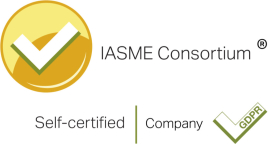
The impact of the pandemic on school age children has been well documented. Last summer it was reported that independent school headteachers had seen ‘an extraordinary surge in enquiries’ from parents looking to make the move from state educating their children. Some putting the increase at 20-30%.
On average, private school fees can range from £15,000 – £30,000 per child per year so parents/grandparents could be paying up to £450,000 per child in school fees alone. This is a significant sum of money and this is before they consider university and other further education costs. This is set against the backdrop of uncertainty about how the Treasury hope to pay for the country’s coronavirus support.
Education Trusts
Setting up a trust may be ideal for those parents or grandparents who may wish to save money over a period of time to fund these expenses or if they wish to transfer a lump sum as part of their estate planning.
So now might be the right time to plan ahead for those who wish to make provisions for their children and grandchildren by setting up a trust for their education.
We regularly advise on setting up trusts for this purpose and the key client questions are:
- What type of trust should I set up?
- What are the tax consequences of setting up a trust?
- How are the fee payments made?
What type of trust should I set up?
It is important to consider the type of trust to suit the needs of the family. Different trusts have different tax consequences. Beneficiaries’ rights to the income and capital of the trust fund will also differ among different trusts.
There are three main trusts which could be appropriate in setting up a trust to fund a child/grandchild’s education.
- Bare trust
- Discretionary trust
- Interest in possession trust
Bare trusts
A bare trust is essentially a nominee arrangement and the children/grandchildren are deemed to own the assets of the trust for tax purposes.
Any income arising under a bare trust arrangement is treated as though it belongs to the beneficiary and therefore becomes taxable on them. Given that the beneficiaries in these circumstances are likely to be minors and are unlikely to have other income, the bare trust arrangement allows them to utilise their tax free allowances such as the personal allowance, savings rate allowance and dividend allowance. This is perfect for grandparents who wish to transfer income producing assets to the grandchildren where the donor is not a basic rate taxpayer or where the donor wishes to reduce the value of their estate for inheritance tax (IHT) purposes.
However, care should be taken where parents are setting up bare trusts for their minor children as anti-avoidance legislation taxes any income arising in the hands of the parents so this may not be tax efficient. However, if the trust is used to fund university fees or consists of non-income producing assets with the expectation of capital gains at a later date, then this would not be an issue.
The downside to setting up a bare trust is that the beneficiary is entitled to take control of the trust assets at age 18. The parent/grandparent may not wish for the minor to control these assets at such a young age. However, the trustees are obliged to hand over control at the request of the beneficiary if they are aged 18 or over, even if the trustees fear that the beneficiary will use the money irresponsibly. A discretionary trust or an interest in possession trust may therefore be more appropriate.
Discretionary trusts
A discretionary trust is much more flexible as it gives trustees discretion to pay income or capital to the beneficiaries. Unlike a bare trust, there is a class of beneficiaries who can benefit from the trust and these beneficiaries are not entitled to the assets of the trust upon attaining 18 years.
The anti-avoidance provisions which apply to parents setting up a bare trust also apply to discretionary trusts. The only difference is that the income will become taxable on the parents on distributions to the minor child instead of being taxable on the income as it arises. If the parents set up the trust with the intention to fund school fees, then a discretionary trust may not be a tax efficient option. However, as the income is not taxed on the parents or the beneficiaries as it arises, the parents could transfer income producing assets into the trust and the income can be accumulated over a period of time and subsequently used to fund university fees.
Trust tax position
Income received by the discretionary trust is taxed at the additional rate of tax (38.1% for dividends and 45% for other income) subject to the £1,000 standard rate band. When an income distribution is made to a beneficiary, the beneficiary is deemed to receive the income net of tax at 45%. This will be received by the beneficiary as non-savings income and must be reported on their personal return for the relevant tax year. Where the child/grandchild in receipt of the income is not an additional rate tax payer they can claim some or all of this 45% tax credit back.
Given that the discretionary trusts taxes dividends at 38.1%, the trustees could be in a position where they are liable to additional tax if they over-distribute income and the trust has not paid enough tax.
This is best illustrated by way of an example and assumes the anti-avoidance provisions do not apply.
The trust receives a £25,000 dividend; the tax position is as follows:
The trust pays tax on the dividend of £9,219. It then distributes the post-tax income of £15,781 to the beneficiary. The beneficiary receives this income net of tax at 45%. This means the £15,781 distribution comes with a £12,912 tax credit. However, the trustees have only paid £9,219 in tax therefore the deficit of £3,693 becomes an additional tax liability on the trustee. Assuming the trust has no other income, this will need to be paid from capital therefore depleting the trust fund and potentially leading to more tax charges if assets need to be sold.
| £ | |
| Dividend | 25,000 |
| 1,000 @ 7.5 % | 75 |
| 24,000 @ 38.1% | 9,144 |
| Total tax liability | 9,219 |
| Plus tax credit deficit | 3,693 |
| Total amount payable | 12,912 |
Beneficiary tax position
| £ | |
| Non-savings income | 28,693 |
| 12,570 @ 0% | – |
| 16,123 @ 20% | 3,225 |
| Total tax liability | 3,225 |
| Less 45% tax credit | 12,912 |
| Amount repayable | -9,687 |
If the beneficiary has no other income, they can claim a refund of £9,687 in respect of the tax paid receiving a total amount of £25,468 towards their education costs.
To prevent the additional income tax liability arising on the trustees and ultimately depleting the trust funds, the trustees could distribute an amount which is sufficient to utilise the tax paid by the trust or create an interest in possession (IIP) trust.
Interest in Possession trusts
Unlike a discretionary trust, the trustees have no power to accumulate income under an IIP trust. The beneficiaries known as the life tenants have a legal right to the net income of the trust and this cannot be retained by the trust.
The life tenancy does not necessarily last during the life tenant’s lifetime as the name seems to suggest; the right to receive the income can be time-limited or only last until a beneficiary reaches a specified age; for example, until the life tenant ceases full time education. The tenancy should be stipulated in the trust deed.
The anti-avoidance rules also apply to parents setting up an IIP trust for their minor children. Assuming minor children were the life tenants of the trust, this income would become taxable on the parents on an arising basis. If the intention is to transfer non-income producing assets and the trust is being used to pay for university fees, the anti-avoidance provisions may not be an issue. However, if you are giving income to a life tenant, holding non-income producing assets within the trust may defeat the purpose of setting up an IIP trust in the first place. The trust could hold income producing assets after the life tenant attains 18 years by either selling the non-income producing assets and re-investing the sale proceeds into income producing assets or the parents could settle additional income producing assets into the trust.
Trust tax position
If the children/grandchildren are appointed as life tenants of the trust, then they would have a right to the income/enjoy the assets of the trust. The trustees would pay income tax at the basic rate (7.5% for dividends and 20% for other income) and the life tenant(s) would be entitled to the net income of the trust together with the tax credit at the appropriate rate.
This is best illustrated by way of an example and we can compare how the tax and distributions received by the beneficiary can differ. The example assumes the anti-avoidance provisions do not apply.
The trust receives a £25,000 dividend; the tax position is as follows:
| £ | |
| Dividend | 25,000 |
| 25,000 @ 7.5% | 1,875 |
| Total amount payable | 1,875 |
The trust pays tax on the dividend of £1,875. The life tenant would receive a net dividend of £23,125 with a tax credit of £1,875.
Beneficiary tax position
| £ | |
| Dividend | 25,000 |
| 12,570 @ 0% | – |
| 2,000 @ 0% | – |
| 10,430 @ 7.5% | 782 |
| Total tax liability | 782 |
| Less trust tax credit | 1,875 |
| Amount repayable | (1,093) |
If the life tenant had no other income, they would be able to claim £1,093 from HMRC when you take into consideration their personal allowance and dividend allowance. Unlike a discretionary trust, the distribution of all of the income has not created an additional tax liability on the trustees or depleted the trust’s capital assets.
The total amount received by the life tenant is £24,218 to cover the education fees and other associated costs.
Who should set up the trust?
As noted above, anti-avoidance provisions exist to avoid parents diverting income to minor children by creating a trust.
If parents create any trust for the benefit of their children, income will become taxable as it arises (Bare trust or IIP trusts) or when distributions are made to the child (discretionary trusts) in the hands of the parents while the children are minors, subject to a de minimus limit of £100.
Once the child reaches 18 years old, any income distributions thereafter become taxable on the child. If the parent’s intention is to create a trust to fund their children’s’ university fees, then setting up a trust would not be caught by these anti-avoidance provisions on the expectation that any income arising or distributions to the child would be made after they attain the age of 18.
To circumvent this, it is quite common for grandparents to set up a trust for the benefit of their grandchildren as the anti-avoidance provision does not apply to them. If the grandparents create a trust, then the income can be used to pay for their grandchildren’s school fees as well as their university costs.
Other matters to consider
- These trusts are typically settled by parents and grandparents with shares held in a family owned company although this is not always the case.
- Settling assets into a trust could trigger IHT and capital gains tax (CGT) charges; however, certain reliefs could apply, such as business property relief for IHT and holdover relief for CGT, reducing the tax charges to nil. These reliefs would be available to trading businesses therefore would be of particular interest to those with family owned businesses wishing to pass on wealth to the next generation as well as saving tax.
- This article predominately focusses on income being used to fund education costs but capital taxes will also require consideration during the life of the trust and tax on capital distributions should also be considered.
- Provided the trust deed allows, an IIP could be created within the discretionary trust giving further flexibility to the trustees and structuring the trust in this way could be both tax efficient while meeting the education costs.
- The trust could be created by using different classes of shares such as ‘A’ and ‘B’ share type arrangements or the use of preference shares carrying fixed dividend rights. However, the commercial consequences of these transactions should also be considered as a result of the voting and capital rights attached to the shares. Ownership of the shares will have been handed over to the trustees. This would be ideal for family owned businesses wishing to introduce the next generation to the business while retaining some level of control. The use of trusts also adds another layer of protection ensuring assets do not pass to non-family members.
- Schools cannot enter into a contract with a minor for school fees, therefore the contract will generally be with the parents to settle such fees. If the fees are then subsequently settled from trust funds, HMRC may seek to argue this is an income benefit for the parents and therefore could become taxable on that benefit. With careful planning, the trustees and the parents could take certain steps to minimise such an argument.
Overall, such structures, if properly created, can be very beneficial: the education fees are paid; income can be shifted around the family tax-efficiently; exposure to IHT in the hands of the settlor including any future growth of the assets is removed from the estate.
Since publication, HMRC have issued guidance on dividend diversion schemes which have been used to fund education fees (Spotlight 62). In their example, a grandparent acquires new shares below market value which are subsequently gifted to a trust. We agree with HMRC’s view that this transaction would not be a commercial transaction and it would be considered as tax avoidance.
However, in the author’s view, it is common for parents and grandparents to set up a trust to benefit their children and grandchildren as part of wider succession and estate planning. If structured correctly, it can still be used legitimately for these purposes today.
If you are thinking of making provisions for your children or grandchildren’s education and would like to discuss the use of a trust in further detail, please contact Reena Bhudia
A version of this article by Reena originally appeared in FT Adviser
The information in this article was correct at the date it was first published.
However it is of a generic nature and cannot constitute advice. Specific advice should be sought before any action taken.
If you would like to discuss how this applies to you, we would be delighted to talk to you. Please make contact with the author on the details shown below.








